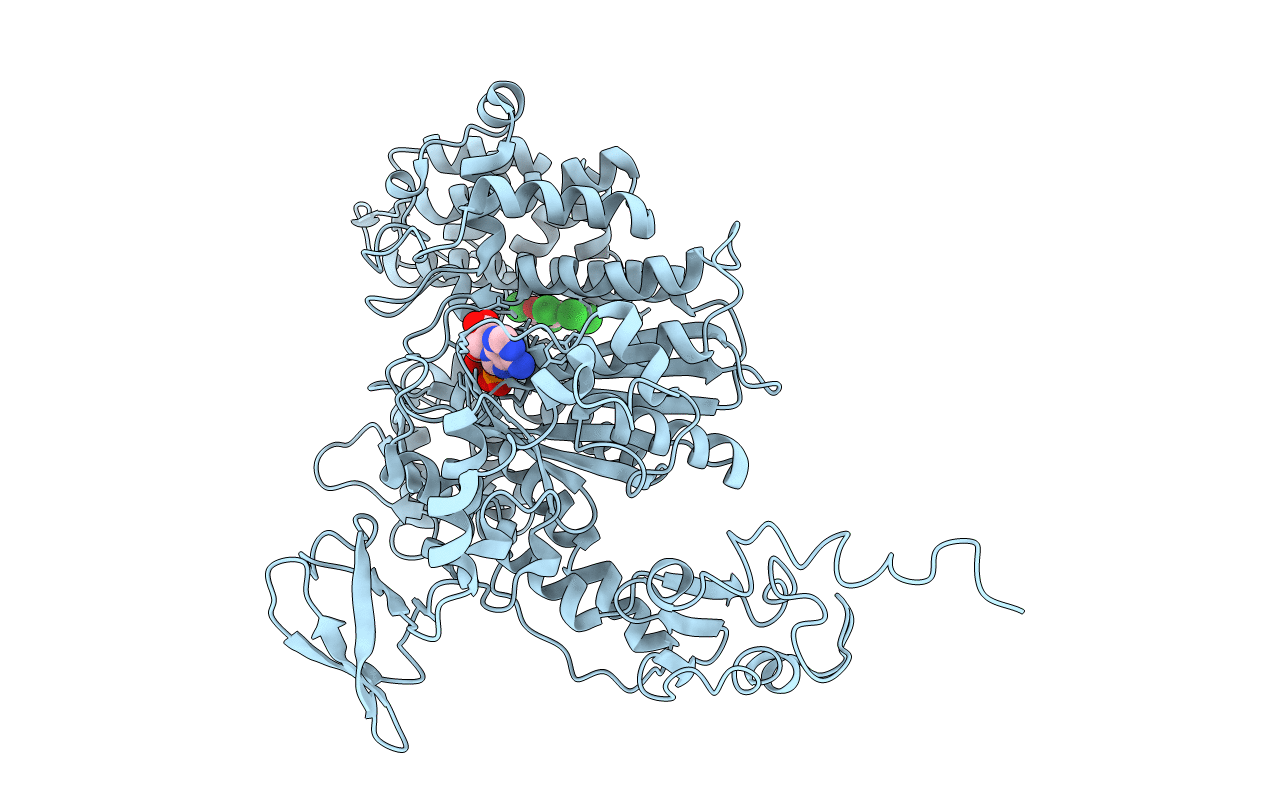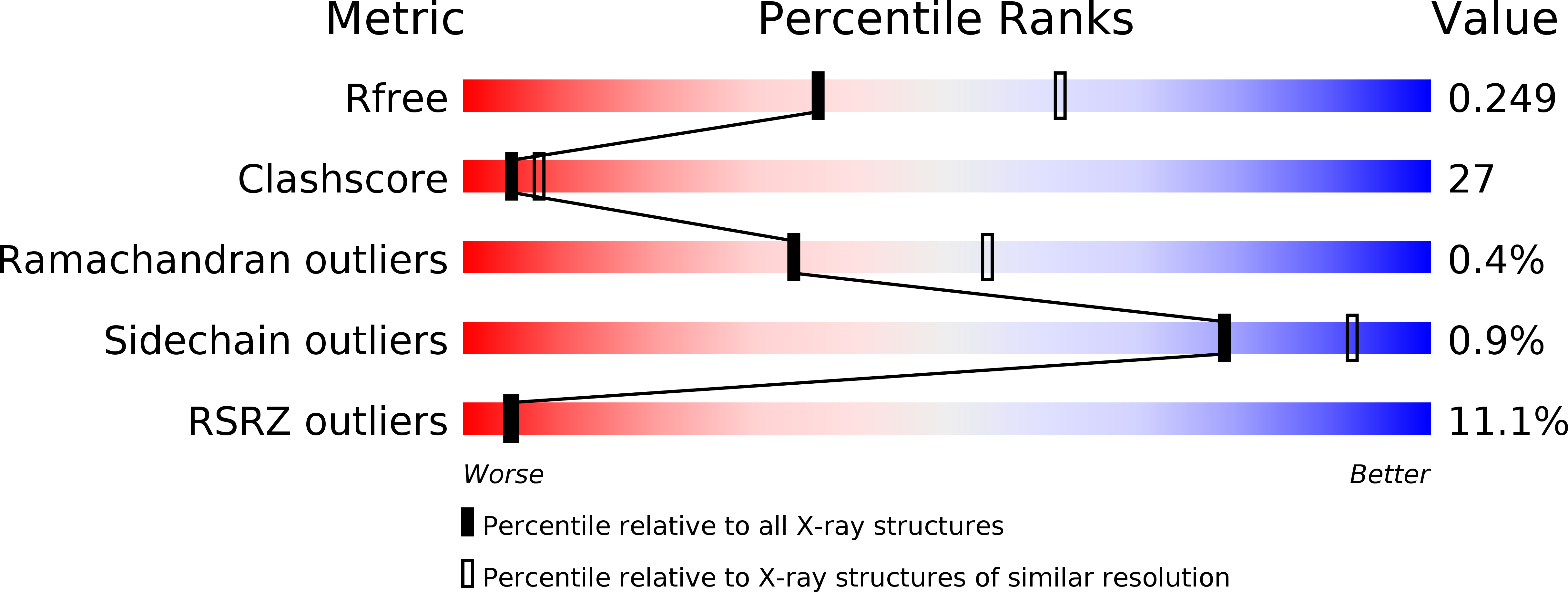
Deposition Date
2010-05-16
Release Date
2011-06-15
Last Version Date
2024-05-08
Entry Detail
PDB ID:
2XEL
Keywords:
Title:
Molecular Mechanism of Pentachloropseudilin Mediated Inhibition of Myosin Motor Activity
Biological Source:
Source Organism:
DICTYOSTELIUM DISCOIDEUM (Taxon ID: 44689)
Host Organism:
Method Details:
Experimental Method:
Resolution:
2.50 Å
R-Value Free:
0.25
R-Value Work:
0.22
R-Value Observed:
0.22
Space Group:
C 2 2 21


